One Piece Odyssey review: 'The best One Piece game yet'

One Piece deserves a good video game adaptation more than most other anime series. Dragon Ball Z: Kakarot is a great open world game, and Dragon Ball FighterZ is an excellent, gorgeous 2D fighter. Naruto even has the Ultimate Ninja Storm series, which sees CyberConnect2 fully flex its cinematic animation talents. Until now though, One Piece is best represented in the modern day by a Dynasty Warriors spin-off.
It doesn’t even matter what you think of the One Piece story – we all know it’s a masterpiece – but the series deserves a solid adaptation, just down to the fact that it’s the last surviving member of the Big Three shonen franchises of the late ‘90s and early ‘00s era. This is a series that has developers of amazing games like Final Fantasy XIV and Yakuza: Like A Dragon professing their adoration. It has inspired many projects. And yet, One Piece doesn’t have a game that comes anywhere close to those gems.
One Piece Odyssey wants to change all of that by doing one, simple thing: taking action out of the player’s hands. Anime games tend to look striking in the modern era, but things fall down when they’re in your hands. We’ve seen countless anime arena fighters, and the trailers always look so much more exciting than it is to actually play them. Tapping attack, attack, attack, special, for every combo can only stretch your enjoyment so far.
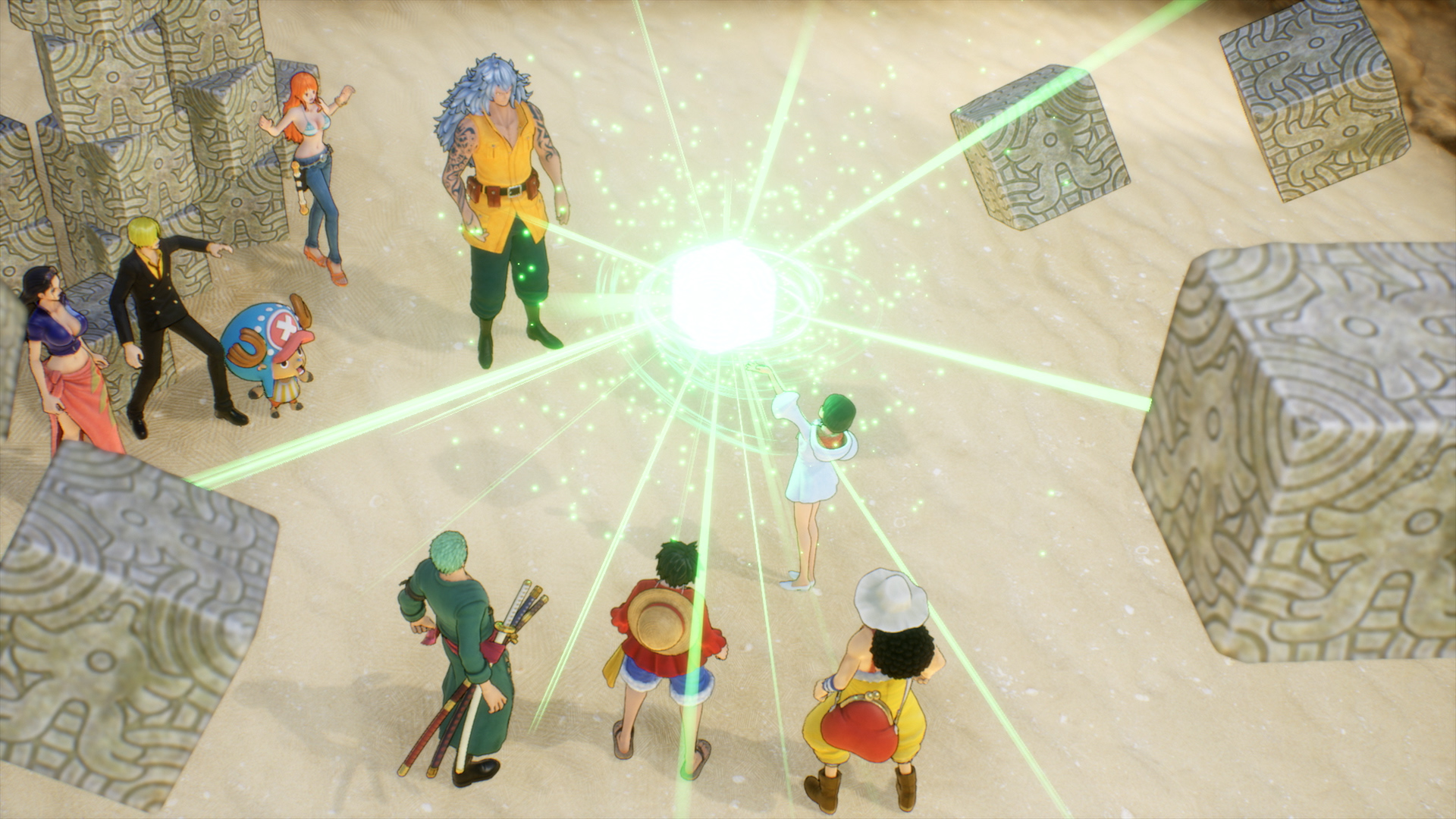
So when we take those flashy, beautiful attack animations and put them in a unique turn-based battler, we’ve already taken a few steps in the right direction, and that’s clear immediately. They might play out after selecting an option from a menu, but the combat animations here are gorgeous. Luffy’s Gatling is a barrage of punches, while Zoro’s laser-swift swordsmanship simply flashes on screen for as long as it takes to turn a page. It makes a great impression, but let’s be clear: the Speed Up option is a necessary inclusion. Watching the full-length attack animations for every battle gets old fast.
Battles are strategic and deeper than they initially seem, forcing you to think about every encounter. There’s a unique range and zone mechanic where you have either long or short-range attacks, and those attacks can hit multiple foes, or just a single enemy. Short-range attacks can either hit foes within your zone, or move you to another zone, assuming there aren’t any enemies nearby. Long-range attacks will, of course, allow you to stay in a separate zone to the enemy you’re targeting. It seems obvious to throw all your allies into a single zone to wail on a monster, but that will also put all of your party members at risk of close-range attacks — especially ones that can hit multiple allies at once.
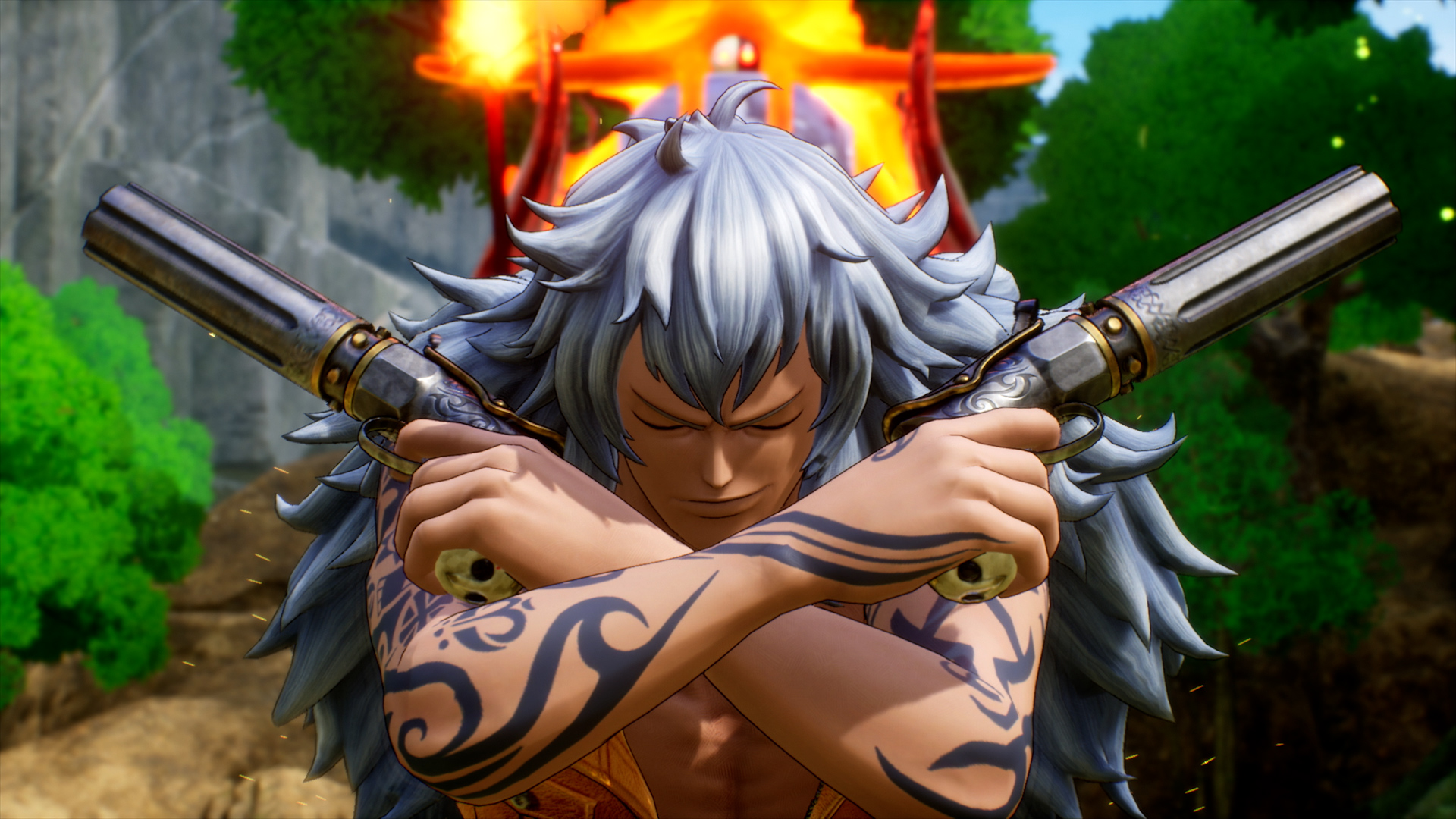
On top of this, enemies and allies alike are sorted in Power, Speed, and Technique types, and there’s a classic elemental triangle between them. Luckily the game allows you to swap active and inactive party members at will without using a turn, meaning with some strategy in mind you can tactically swap characters around, therefore helping them switch zones, and swap in allies that will have a distinct advantage. It also means you won’t enter a battle regretting your team composition, thankfully.
It’s a surprisingly inventive and solid turn-based battle system, and an extra layer is added with challenges that appear mid-battle. These challenges feel similar to Xenoblade Chronicles’ warnings of upcoming enemy attacks. It’ll challenge you to defeat a foe with a certain party member, eliminate enemies in a certain zone quickly, or defeat a monster within a turn limit. These will reward you with potentially huge EXP boosts – in one case I received 3,800 bonus EXP from a battle that would only offer 200 EXP otherwise. Thanks to this occasionally popping up, it never felt like grinding was necessary to keep up.
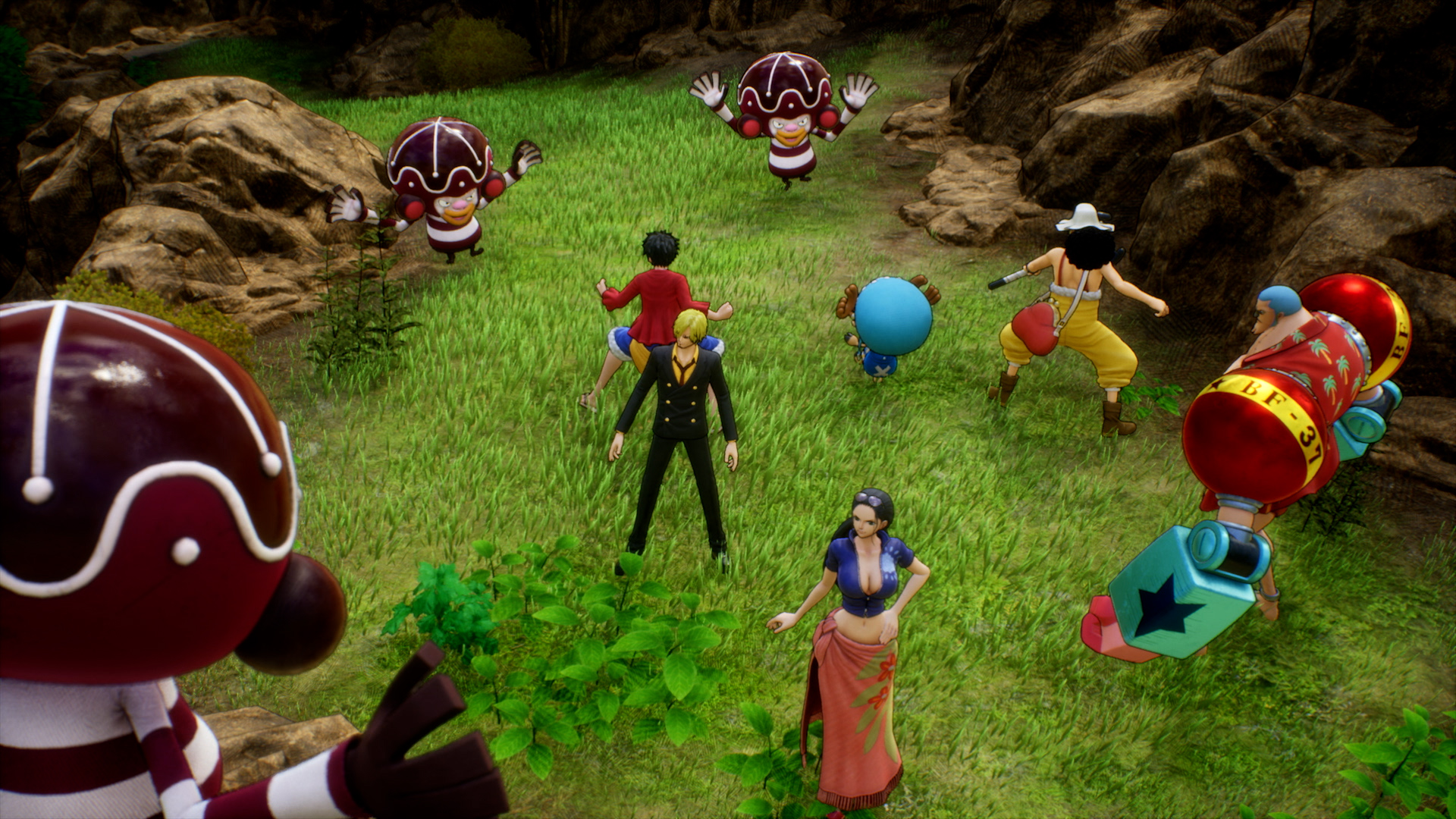
Unfortunately, the rest of the game doesn’t take the same inventive leap forward. One Piece Odyssey features a mysterious island, Waford, some ancient technology, and our crew get their litany of abilities conveniently stripped so we can earn them back over time. It feels like the most generic possible setting for a One Piece side story, and it goes even further when it starts revisiting old areas.
Alabasta, Water 7, Enies Lobby, Marineford, and Dressrosa are all included as familiar areas that you will explore in Odyssey, with some key changes. You’re exploring memories, so the environments and events may change from the canon story. It’s a fun idea, but it just feels like a contrived way to perform some silly fan-service wish fulfillment. That beloved character? What if they didn’t die? It’s a fun idea for a bunch of manga theorists in a Facebook group, but it doesn’t make for a compelling story.
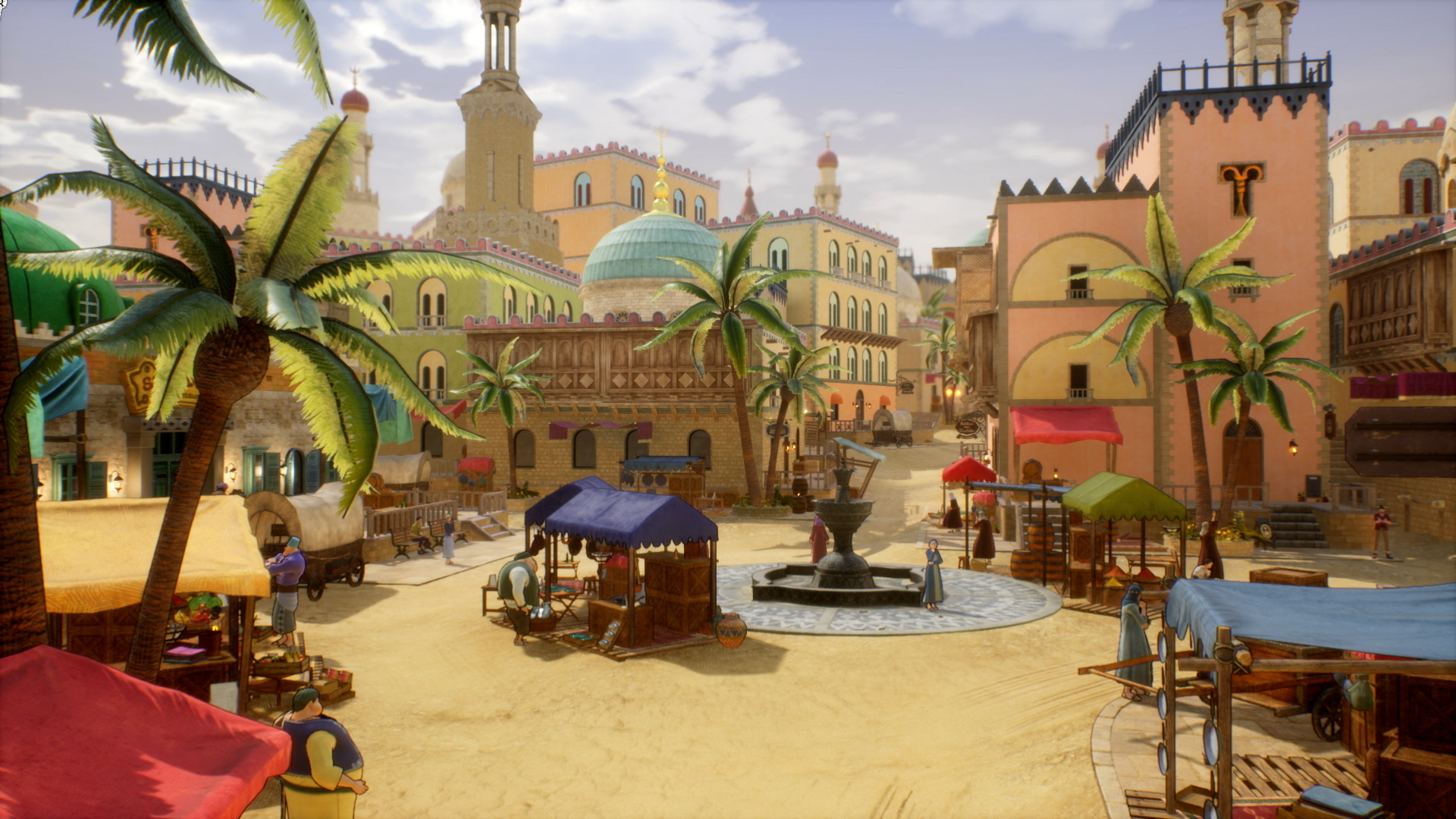
But the biggest crime is just the simplicity of everything you do outside of combat. You’ll walk down a path to talk to a person, walk back down the same path, talk to another person, and then jump between the two to solve a fetch quest. This is necessary, main-story stuff, not a side quest. Almost everything you do is stretched out somehow, but that just increases the amount of time you have to think about how bland everything is.
Saying all of that, if you’re going to play a licensed anime JRPG, you already know what you’re getting into. Yes, the pacing is off, and the moment-to-moment story certainly isn’t life-changing in any way, shape, or form. It’s fine. It’s just fine. Everything in One Piece Odyssey works and it looks nice. Fine. If you have the patience for conversations and moments that feel like flashbacks to the very worst anime filler episodes, then you’ll find the occasional gem amongst everything else.
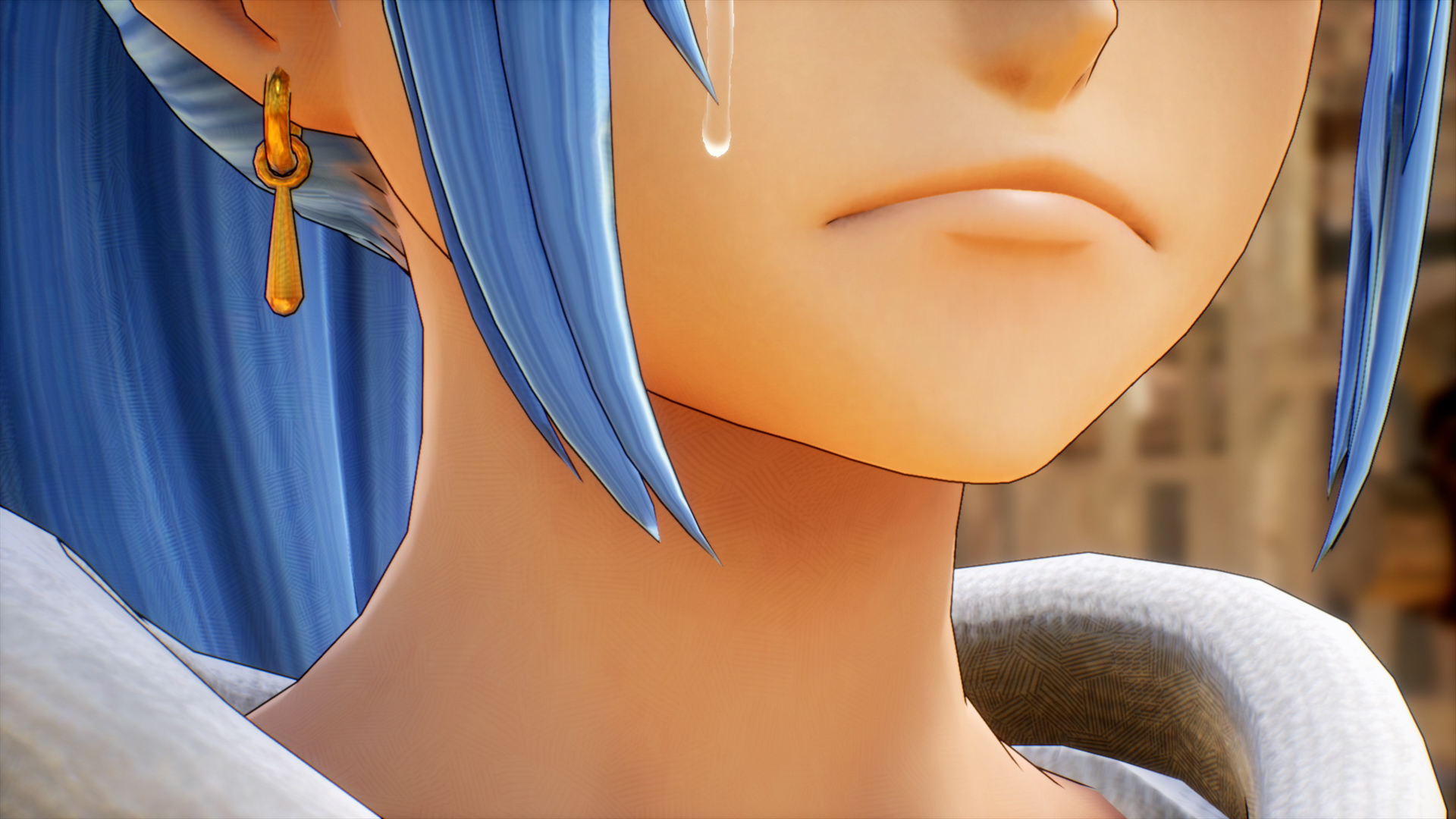
One Piece Odyssey is a solid, if sometimes tedious, JRPG. The setting and new characters are forgettable, but it’s great to see the One Piece cast’s array of iconic moves represented with some genuinely gorgeous visuals and impactful sound effects. The unique battle system carries the rest of the experience, and helps make this one of the best One Piece games in recent memory, but it was never exactly a high bar.
